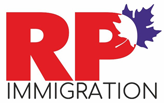As of November 1, 2024, significant changes have been introduced regarding study permits and Post-Graduation Work Permits (PGWPs) in Canada. If you’re planning to study in Canada, it’s crucial to understand these updates to ensure you meet the new requirements.
1. Language Proficiency Requirements
Starting November 1, all study permit applicants must demonstrate language proficiency by achieving the Canadian Language Benchmarks (CLB) or the National Council of Language Competencies (NCLC) level 5 or 7 in all four areas: reading, writing, listening, and speaking. This change aims to ensure that international students can effectively communicate in academic and workplace settings.
2. Eligible Fields of Study
Graduates from public college programs must now enroll in specific fields of study to qualify for a PGWP. The eligible fields include:
- Agriculture
- Healthcare
- STEM (Science, Technology, Engineering, and Mathematics)
- Skilled Trades
- Transportation
Choosing a program within these categories will be vital for securing your PGWP after graduation.
3. Updated Program Requirements
Some programs may no longer qualify for a PGWP. It is essential for both new applicants and current students in Canada to carefully select their courses, particularly if they are considering moving to a second-year program. Always check with your institution for the latest information on program eligibility.
4. Transition Period for Existing Students
It’s important to note that students who applied for or held a study permit before November 1, 2024, will remain eligible for a PGWP under the previous rules. This provides some reassurance for those already enrolled or in the application process.
Navigating the Changes
These updates are part of Canada’s broader efforts to manage the flow of international students while addressing labor shortages in key sectors. If you’re feeling uncertain about your eligibility or which courses to choose, we’re here to help!
Conclusion
Staying informed about the latest updates regarding study permits and PGWPs is crucial for a successful academic journey in Canada. By understanding and adapting to these changes, you can better prepare for your future and maximize your opportunities in the Canadian workforce.








